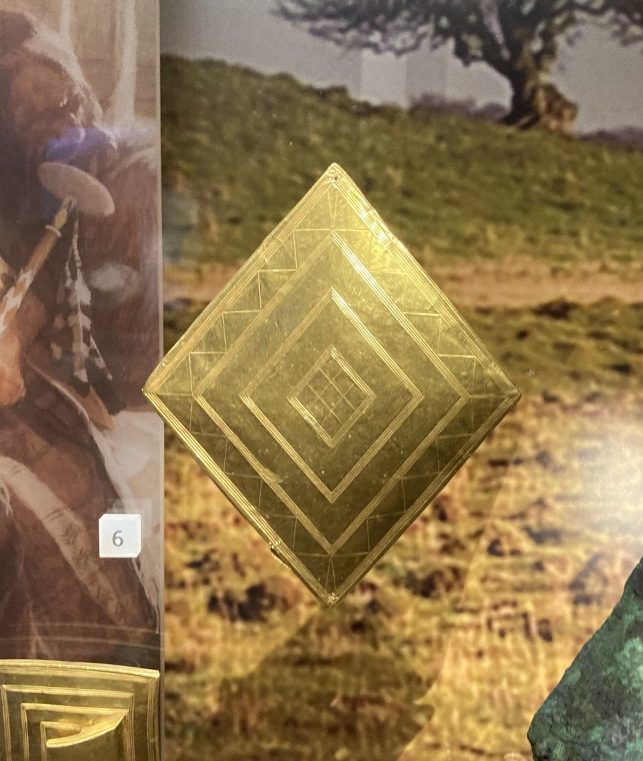This man, buried close to Stonehenge, was given Britain’s richest Bronze Age burial in around 1950 BC.
Described as a ‘stout and tall man’, he was buried with objects that symbolised his power and authority in life. On his chest was a gold lozenge that fastened his cloak and would have glinted in the sun. The carefully laid out design of the lozenge shows a detailed knowledge of geometry. The sharpest angle is similar to that between the summer and winter solstice.
He was buried with a bronze dagger adorned with an intricate design created from thousands of tiny gold studs. The dagger hung from his belt, looped on a spectacular gold belt hook which was finely decorated with incised curving lines delicately scored into the soft metal. The Chieftain was also buried with an axe from Brittany, a rare object to be placed in a burial. Axes and daggers were the symbols of power carved onto the great sarsen stones at Stonehenge.
The Chieftain also had a mace, its handle set with gleaming white bone and a small gold lozenge. The head of the mace was made of a carefully chosen stone, ground and polished to a magnificent finish. The mace may have been decorated with ribbons, fur or brightly coloured feathers that have long since rotted away. Tied to it were bone rings that would have jangled and rattled as the Chieftain gestured and danced.
The Bush Barrow Chieftain - a short introduction
Bush Barrow, Brittany and Mycenaen gold-working
Where did the Bush Barrow gold come from?


